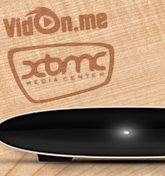From the World Cup to Netflix, in 2014 you’re going to start hearing a lot more about 4K resolution or ‘Ultra HD.’ But what is it? And more importantly, do you want it?
As if 3D TV and LED LCD vs. OLED vs. plasma and 120Hz and the Soap Opera Effect weren’t confusing enough, in the last year we have seen the rise of a new HDTV technology called 4K. Or if you use its official name, Ultra High Definition (UHD).
UHD is an “umbrella term” that encompasses higher resolutions (more pixels) than HDTV, as well as more realistic color and higher frame rates. Today and this year, pretty much the only one of those improvements available in new TVs and content is 4K resolution, so that’s what we’ll talk about here. Judging from the new TVs shown at CES 2014, manufacturers are tripping over themselves to bring you a new array of 4K compatible products.
But just like 3D and HD before it, 4K has a case of putting the hardware chicken before the software egg. About 15 months after 4K TVs first appeared on the market , there’s little consumer 4K content available: no TV channels or Blu-ray discs, just a few specialized video players, YouTube and other clips of varying quality, and promises of streaming video.
Still, the shift from 1080p to 4K TV hardware is inevitable. This year 4K TVs will replace high-end 1080p models as the best-performing LED LCD-based sets on the market — although the reason they’re better will have nothing to do with resolution.
Confused again? Don’t worry, we’ll walk you through, starting with the question: So what is 4K anyway, and what makes it different from high definition?
![]()
In August 2012, the Consumer Electronics Association introduced the term Ultra High Definition, partly defined as resolutions of “at least 3,840×2,160 pixels”. The idea was to replace the term 4K. The CEA’s name lasted less than a day, as Sony then announced it was going to call the technology “4K Ultra High Definition”. This is the term now used by most other TV manufacturers too, who seem interested in covering all the buzzword bases at the expense of brevity.
In practice, you will often see UHD used interchangeably with 4K, whether describing TVs, source devices, accessories or content. We at CNET say “4K” instead of “UHD” almost exclusively, and our readers and Google strongly agree.
![]()
The latest in a line of broadcast and media resolutions, 4K is due to replace 1080p as the highest-resolution signal available for in-home movies and television.
With the arrival of 4K there are four main resolution standards for use in the home: standard definition (480p/540p) , high definition (720p), full high definition (1080i/p) and ultra high definition (2160p).
When used in a home context, 4K/UHD means the TV’s screen has a minimum resolution of 3,840 pixels wide and 2,160 pixels high, making it the equivalent to two 1080p screens in height and two in length. This resolution was originally known as “Quad HD,” and it’s used by basically every 4K TV.
Another resolution, known as 4Kx2K (4,096×2,160 pixels), is used by some projectors and many professional cameras. It also falls under the umbrella of 4K/UHD. Other shooting resolutions are also employed in the pro realm, depending on the camera.
While 4K is relatively new, high definition (HD) itself has been with us for about a decade, and is the format used in Blu-ray movies and HD broadcasts. There are three main versions of HD: full high definition 1080p (progressive), 1080i (interlaced), and 720p (also called simply “high definition”).
Despite the existence of HD and 4K, many television programs, online videos and all DVDs are still presented in standard definition, loosely defined as 480 lines. Standard definition began life as NTSC TV broadcasts before switching to digital with the introduction of ATSC in 2007.
![]()
While it’s currently being touted as a new broadcast and streaming resolution–particularly with the appearance of the HEVC H.256 codec–the roots of 4K are in the theater.
When George Lucas was preparing to make his long-promised prequels to the “Star Wars” movies in the late ’90s, he was experimenting with new digital formats as a replacement for film. Film stock is incredibly expensive to produce, transport, and store. If movie houses could simply download a digital movie file and display it on a digital projector, the industry could save a lot of money. In a time when cinemas are under siege from on-demand cable services and streaming video, cost-cutting helps to keep them competitive.
 XC Techs Knowledge Base We Are Here to Help You In Style
XC Techs Knowledge Base We Are Here to Help You In Style








